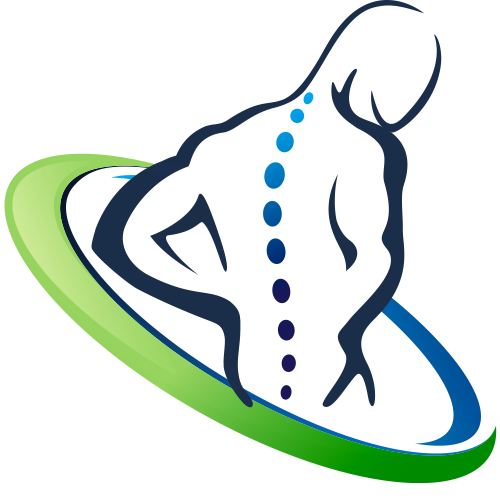Piriformis Syndrome: A Real Pain in the Butt
by Dr. Nicolas Campos
 Forgive me, but do you want to know what can be a real pain in the butt? Piriformis syndrome, that’s what. Quite a fair share of people suffering from piriformis syndrome comes in to my Los Angeles, Beverly Hills and West Hollywood chiropractic office. Piriformis syndrome is tricky, because if not treated properly, it can become a recurring bout of low back pain, hip pain, or numbness and tingling in the legs or feet, depending on whether the sciatic nerve is impinged or not. What I will discuss in this article are the causes of piriformis syndrome, a few home remedies that can relieve your immediate pain and discomfort, and how a good sports chiropractor would treat your low back, hip and buttock pain caused by piriformis syndrome. Forgive me, but do you want to know what can be a real pain in the butt? Piriformis syndrome, that’s what. Quite a fair share of people suffering from piriformis syndrome comes in to my Los Angeles, Beverly Hills and West Hollywood chiropractic office. Piriformis syndrome is tricky, because if not treated properly, it can become a recurring bout of low back pain, hip pain, or numbness and tingling in the legs or feet, depending on whether the sciatic nerve is impinged or not. What I will discuss in this article are the causes of piriformis syndrome, a few home remedies that can relieve your immediate pain and discomfort, and how a good sports chiropractor would treat your low back, hip and buttock pain caused by piriformis syndrome.
What is Piriformis Syndrome?
Now any nerve pain is intense, but what you get with sciatica is a burning, electrical pain down your leg. It’s usually enough to cause a limp. I’ve had sciatica caused by piriformis syndrome before, and just about everything irritates it—walking, sitting, lying down, everything. Forget pain killers or anti inflammatories because they don’t do diddly-squat for this condition. Only a handful of therapies do the trick—we’ll be getting to them shortly—but not all cases of piriformis syndrome cause sciatica. Some cause buttock and hip pain only, while others include low back pain. But another distinguishing characteristic of this syndrome is that it is almost always worse with sitting. This is because when we sit we do so right on top of the piriformis muscle. This little bit of anatomical trivia will come in handy later, as one of the home treatments for piriformis syndrome addresses this fact. What Causes Piriformis Syndrome?
Short, tight muscles can come about from few different situations—lack of stretching, weak synergistic or antagonistic muscles, chronic subluxation, and foot dysfunction. Every one of these scenarios is reversible; therefore piriformis syndrome is a correctable disorder. Piriformis Syndrome Caused by InflexibilityA simple physiological principle is that we need to stretch to maintain functional muscle length. Short, tight muscles can cause a number of problems including joint dysfunction, circulation problems, poor posture, and as in the case of piriformis syndrome, nerve entrapment. So, one solution to piriformis syndrome is to stretch regularly. Two stretches in particular are superb for relieving piriformis syndrome—the supine piriformis stretch, and a yoga pose called pigeon. To do the supine stretch, you need to lie on the floor on your back with knees bent. Crossing one leg over the other, push the lever side (which is the side not being stretched) actively toward your chest. By default, the bent leg will also move closer toward your chest, stretching the piriformis muscle. This stretch is excellent, especially for people that have poor flexibility to begin with. For those a bit more flexible, the pigeon stretch will be much more effective.
The pigeon stretch is done on the floor or on a yoga mat. You need to bring your affected leg in front of you with a bent knee and bent hip. The unaffected leg should be stretched straight out behind you. The benefit of this stretch over the supine one is that you will get a much deeper opening of the piriformis muscle—great for those of you who already stretch a little now. Further, the hip flexors of the unaffected side also get stretched in pigeon, making it a great all around hip opener.
To get a better idea of how to do each of these stretches, you can watch the video below. Piriformis Syndrome Caused by Weak MusclesAlthough piriformis syndrome is a condition of short, tight muscles, weak muscles—usually an antagonistic or synergistic group—can also contribute significantly to this problem. In piriformis syndrome the weak muscles are typically the gluteal muscles—gluteus maximus and medius to be exact.
The gluteus medius holds our pelvis upright as we stand. When it gets weak, guess which muscle has to kick in a bit more to compensate? Yup, the piriformis muscle. And any muscle that contracts more gets bigger (think weight lifting) and tighter, so weak gluts indirectly lead to piriformis syndrome.
Piriformis Syndrome Caused by Chronic Subluxation
Piriformis Syndrome Caused by Foot DysfunctionThe final and perhaps most common cause of piriformis syndrome is foot dysfunction, primarily overpronation. Overpronation is an excessive rolling-in of the feet as a result of dropped arches. Remember that the main role of the piriformis muscle is to prevent inward collapse of the legs during walking; therefore, when overpronation is present, the piriformis works overtime to counter the inward movement of the leg during the gait cycle. The result: an overworked and fatigued piriformis muscle, with all the other fixings that come along with it.
The way to correct this cause of piriformis syndrome is by wearing custom-made orthotics. Orthotics are shoe inserts that correct foot dysfunction by creating the natural and missing arch common in overpronaters. By doing so, not only is the biomechanical fault responsible for piriformis syndrome cleared up, but so are many other dysfunctions related to overpronation. The wearer gets relief from any and all pain conditions related to their foot dysfunction, including low back pain, knee pain or shin splints, among others. That’s the idea anyway. Let it be known that orthotics offer no protection sitting unworn in the closet; so the only useful orthotic is the worn orthotic. Piriformis Syndrome: Treatment and PreventionWe’ve discussed the various causes of piriformis syndrome, but what do you do if you have it? Let me first discuss how you will be treated in my Los Angeles, Beverly Hills and West Hollywood sports chiropractic office, then I will get into things you can do on your own to help relieve the pain brought on by piriformis syndrome.
A doctor will do an examination, primarily to address two things: One, is your problem stemming from the piriformis muscle, or is it coming from the spine (herniated disk)—the origin of the problem will determine the treatment plan—and two, what is the actual causative factor. In the case of piriformis syndrome, a sports chiropractor will determine if a foot dysfunction is present, if it’s just a tight or weak muscle, or if subluxations are a part of the equation. If subluxations are present, then a chiropractor can adjust you. Remember that only a chiropractic doctor can detect and correct subluxations; you won’t get that essential treatment in an MDs or physical therapist’s office. A chiropractor can do therapy though, so electric stim, ice, therapeutic stretching and rehabilitation exercises to strengthen weak muscles are all in the chiropractor’s scope. This is, in fact, exactly how I treat piriformis syndrome in my sports chiropractic clinic. I start with therapies to reduce muscle spasms occurring in the piriformis. I then provide myofascial release to bring length and relaxation to the muscle. We then adjust the sacroiliac joint(s), and finish off with light stretching. Home care is primarily icing the piriformis along with light home stretching. Finally, if foot dysfunction is present, then I recommend orthotics. This is the main long-term and preventative solution for piriformis syndrome. Custom orthotics can be cast in one hour, and within one week you should be walking normally and without pain in your new orthotics. Piriformis Syndrome Self-CareWhile waiting at home before seeing your sports chiropractor, you can do a few things to help relieve the pain associated with piriformis syndrome. To begin with you can ice the area to reduce inflammation. Watch the video above to see how to do this properly. You can also roll up a towel in the shape of a doughnut, or toilet seat, and use that as a cushion to sit on. This maneuver is especially useful for people who must sit at a desk at home or work for extended periods. Remember, I said in the beginning of the article that a characteristic sign of piriformis syndrome is that pain is worse while seated. Since many sufferers of piriformis syndrome are in their current state precisely because they must sit so much, a rolled up towel might go a long way in bringing pain relief.
Piriformis Syndrome in a NutshellHere are the walk away lessons from this piece on piriformis syndrome:
So don’t delay: If you are suffering from low back, hip, buttock or leg pain; if you have numbness and tingling going into your leg or foot; if it hurts to sit, walk, lie down, then call your sports chiropractor today. If you live or work in Los Angeles, Beverly Hills or West Hollywood, chiropractic care is just a phone call away. Let’s make sure your piriformis syndrome is past history and not a recurring pain in the butt. Call my office today. –
September 30, 2010 |

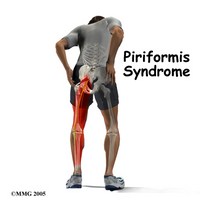 Piriformis syndrome is characterized by lower back pain, pelvic pain, pain in the buttock or hip, and/or sciatica. The main player is a muscle called the piriformis (OK, OK, but you didn’t know it was a muscle, did you?), which is seated in the gluteal or buttock region, and attaches from the tailbone (sacrum) to the thigh bone (femur). Like any muscle, it can get short and tight, but its distinction is that it sits on top of the sciatic nerve. Being the longest and thickest nerve in the body, the sciatic nerve is easily pinched by a short, tight piriformis muscle.
Piriformis syndrome is characterized by lower back pain, pelvic pain, pain in the buttock or hip, and/or sciatica. The main player is a muscle called the piriformis (OK, OK, but you didn’t know it was a muscle, did you?), which is seated in the gluteal or buttock region, and attaches from the tailbone (sacrum) to the thigh bone (femur). Like any muscle, it can get short and tight, but its distinction is that it sits on top of the sciatic nerve. Being the longest and thickest nerve in the body, the sciatic nerve is easily pinched by a short, tight piriformis muscle.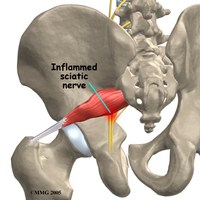 Like I said earlier, piriformis syndrome is caused by a short, tight piriformis muscle. This increase in girth and tension can compromise the sciatic nerve by squeezing or pinching it, leading to inflammation of the nerve and a subsequent case of pain, numbness and tingling down the leg on side of the affected muscle. But an important question to ask is why the piriformis muscle gets short and tight to begin with.
Like I said earlier, piriformis syndrome is caused by a short, tight piriformis muscle. This increase in girth and tension can compromise the sciatic nerve by squeezing or pinching it, leading to inflammation of the nerve and a subsequent case of pain, numbness and tingling down the leg on side of the affected muscle. But an important question to ask is why the piriformis muscle gets short and tight to begin with.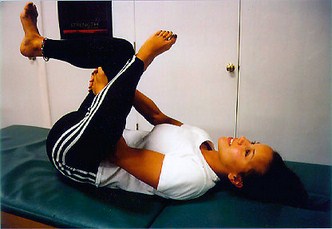
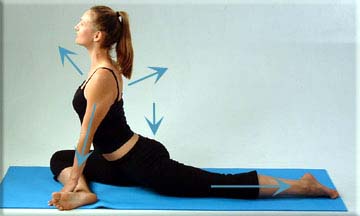
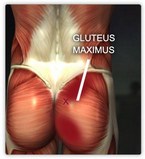 Gluteus maximus is the main muscle of walking, as it extends the hip. It can become lazy in some individuals, and when it does, other muscles have to compensate for its weakness. The piriformis is one such compensatory muscle. As an external rotator (turning the leg outward), the piriformis muscle contracts every time we take a step. Functionally, it prevents the leg from collapsing inward as we walk, so the piriformis muscle is working all the time when we are mobile.
Gluteus maximus is the main muscle of walking, as it extends the hip. It can become lazy in some individuals, and when it does, other muscles have to compensate for its weakness. The piriformis is one such compensatory muscle. As an external rotator (turning the leg outward), the piriformis muscle contracts every time we take a step. Functionally, it prevents the leg from collapsing inward as we walk, so the piriformis muscle is working all the time when we are mobile.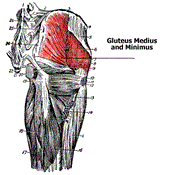 The way to correct the muscle weakness leading to piriformis syndrome is to strengthen the weak muscles. Obvious again, right? But there’s a catch… and this is why you’ll need to visit a sports chiropractor. Weak or lazy muscles are often the result of other tight muscles. Oh heavens, you mean that tight muscles can cause muscle weakness, which can then lead to further tight muscles which ultimately cause dysfunction and pain? Precisely, and this is why you need to have a professional evaluate you. We call it a dysfunctional chain, and usually more than one muscle is involved. It’s worth knowing where you have muscle weaknesses, but be certain that a tight piriformis is a pretty good indicator that you’ve got weak gluts and tight muscles elsewhere.
The way to correct the muscle weakness leading to piriformis syndrome is to strengthen the weak muscles. Obvious again, right? But there’s a catch… and this is why you’ll need to visit a sports chiropractor. Weak or lazy muscles are often the result of other tight muscles. Oh heavens, you mean that tight muscles can cause muscle weakness, which can then lead to further tight muscles which ultimately cause dysfunction and pain? Precisely, and this is why you need to have a professional evaluate you. We call it a dysfunctional chain, and usually more than one muscle is involved. It’s worth knowing where you have muscle weaknesses, but be certain that a tight piriformis is a pretty good indicator that you’ve got weak gluts and tight muscles elsewhere.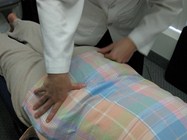 My regular readers know that a subluxation is a stuck joint with neurological implications. In other words, subluxations hamper free movement and can cause nerve pain and/or dysfunction. Chronic or long-term subluxations, then, can lead to piriformis syndrome. The joints in question are the sacroiliac joints (SIJs), which connect the pelvis to the sacrum. The SIJs move every time we bend at the hip, such as during walking, running, sitting, or simply bending down to pick something up. When one or both of the SIJs subluxate (lock up), it forces the surround muscles—like the piriformis—to work harder, and get shorter than if the joints were moving properly. Throw in a lumbar spine or sacral subluxation, along with a few muscular imbalances that we’ve mentioned before and you can probably guess that piriformis syndrome and sciatica is not far off.
My regular readers know that a subluxation is a stuck joint with neurological implications. In other words, subluxations hamper free movement and can cause nerve pain and/or dysfunction. Chronic or long-term subluxations, then, can lead to piriformis syndrome. The joints in question are the sacroiliac joints (SIJs), which connect the pelvis to the sacrum. The SIJs move every time we bend at the hip, such as during walking, running, sitting, or simply bending down to pick something up. When one or both of the SIJs subluxate (lock up), it forces the surround muscles—like the piriformis—to work harder, and get shorter than if the joints were moving properly. Throw in a lumbar spine or sacral subluxation, along with a few muscular imbalances that we’ve mentioned before and you can probably guess that piriformis syndrome and sciatica is not far off.
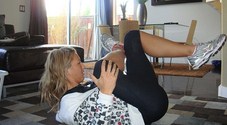 Once again, stretching the piriformis muscle is imperative to relieve the pain and sciatica of the syndrome. I’ve described the two major stretches you can do, but watch the aforementioned video for further instruction. Strengthening weak gluts will also be important if this is your problem, but you’ll need to get these exercises from a trained professional.
Once again, stretching the piriformis muscle is imperative to relieve the pain and sciatica of the syndrome. I’ve described the two major stretches you can do, but watch the aforementioned video for further instruction. Strengthening weak gluts will also be important if this is your problem, but you’ll need to get these exercises from a trained professional.